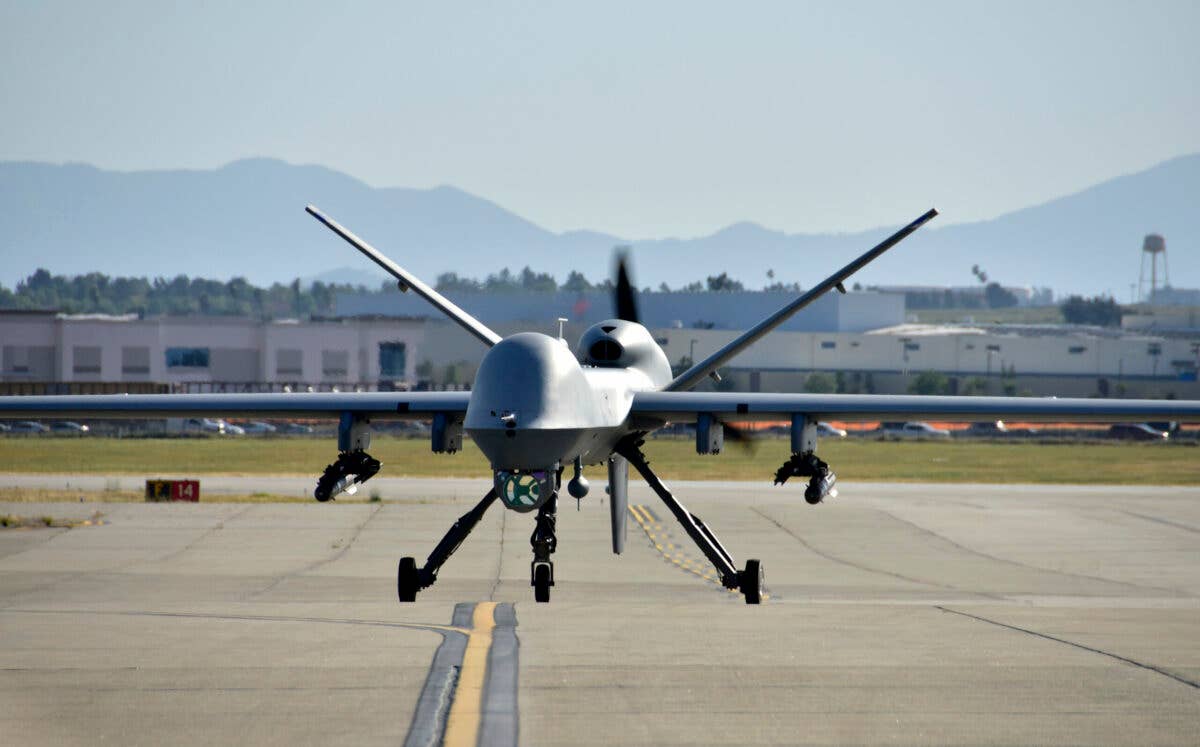Russian Fighter Downs USAF MQ-9 Reaper Over Black Sea
U.S. military officials called the interception of an unmanned aircraft by the fighter “aggressive” and part of an emerging pattern.

An MQ-9 Reaper remotely piloted aircraft from the 163rd Attack Wing lands for the first time at March Air Reserve Base, California. [Courtesy: U.S. Air Force]
A Russian Sukhoi Su-27 fighter intercepted and downed a U.S. Air Force-operated General Atomics MQ-9 Reaper over the Black Sea Tuesday.
The Reaper was conducting an intelligence, surveillance, and reconnaissance (ISR) mission in international airspace over the Black Sea—a common mission Pentagon officials say predates the current war in Ukraine.
The clash between piloted and unmanned aircraft highlights the increasing use of unmanned aerial systems (UAS) in the ongoing war in Ukraine, and—according to a military analyst at the American Enterprise Institute in Washington, D.C.—represents a noteworthy development in the conflict. "This is a very sensitive stage in this conflict because it really is the first direct contact that the public knows about between the West and Russia," AEI senior research fellow Elisabeth Braw told Reuters.
Russian pilots' maneuvering to down the USAF Reaper nearly caused the two fighters to crash as well, a senior U.S. military commander said.
According to U.S. European Command, the March 14 incident occurred shortly after 7 a.m. CET, when one of two Russian Su-27 fighters "struck the propeller" of the drone. "Several times before the collision, the Su-27s dumped fuel on and flew in front of the MQ-9 in a reckless, environmentally unsound and unprofessional manner," it said, adding, "This incident demonstrates a lack of competence in addition to being unsafe and unprofessional."
The drone was piloted down by U.S. forces to the impact site, Pentagon spokesperson Brigadier General Pat Ryder told reporters Tuesday.
While aircraft intercepts are not daily occurrences, they are also not uncommon, Ryder said. "The vast majority of those intercepts are what we would consider safe and professional. Just wanting to see what's there, right? You're flying alongside it to be able to see what's there," he said. "In this particular case, though...they collided with the aircraft, damaging the propeller and essentially putting it in a situation where it was unflyable, uncontrollable, so we brought it down."
U.S. military officials called the incident part of "a pattern of dangerous actions while interacting with U.S. and Allied aircraft in international airspace that are aggressive and could lead to miscalculation and unintended escalation."
Russian military officials, however, denied that the fighters made contact with the Reaper, and blamed the crash of the UAS with a 66-foot wingspan on "sharp maneuvering," Reuters reported. "The Russian fighters did not use their onboard weapons, did not come into contact with the UAV and returned safely to their home airfield," the defense ministry said, according to the news agency.
“Our MQ-9 aircraft was conducting routine operations in international airspace when it was intercepted and hit by a Russian aircraft, resulting in a crash and complete loss of the MQ-9,” said U.S. Air Force Gen. James B. Hecker, commander, U.S. Air Forces Europe and Air Forces Africa. “In fact, this unsafe and unprofessional act by the Russians nearly caused both aircraft to crash.”

Sign-up for newsletters & special offers!
Get the latest FLYING stories & special offers delivered directly to your inbox






